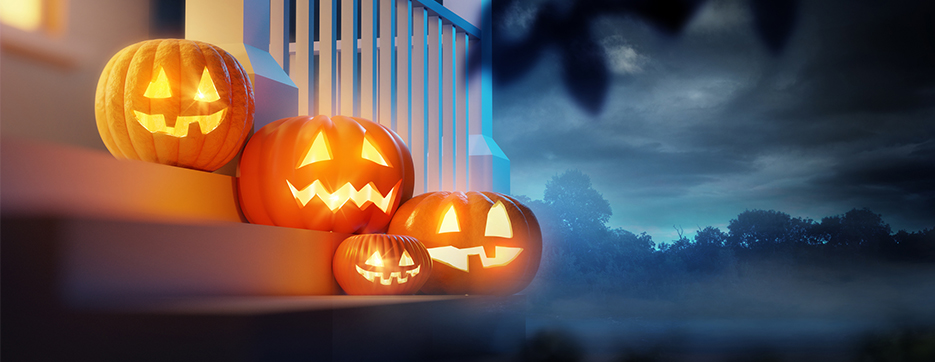-and-
NMHealth and the CDC encourage trick or treating safety.
Source: N.M. Department of Health and U.S. Department of Health and Human Services
Kids of all ages love the magic of Halloween. Putting safety and health first will help make trick or treating Thursday night a great memory for the good ghouls in your life.

For all its sweetness, among the biggest scares is Halloween candy. The New Mexico Department of Health’s (NMHealth) Office of Oral Health recommends:
- Healthy dinners before Halloween festivities.
- Go easy on the treat consumption – don’t overindulge.
- Drink water – it helps wash away food particles and reduce acidity caused by sugary treats.
- Brush and floss your teeth thoroughly, especially before bed.
Think of caution with costumes because one size does not fit all:
- Make sure you and those with you can see clearly through your masks.
- Facepainting is a great mask alternative but consider putting a small bit of makeup on a small part of an arm to test for an allergic reaction before putting it on you or anyone else’s face, particularly children.
- Make sure any costume fits well to help prevent trips and falls.
- Decorative contact lenses without an eye doctor’s prescription are not a good fit. Avoid store-bought lenses to prevent increased chances of eye scratches, sores or infections.
-and-
When trick or treating:
- Use flashlights or glow sticks to see and be seen.
- Reflective tape or strips on costumes can help in the dark.
- Stay on sidewalks wherever possible – and look both ways before crossing the street.
Happy Hauntings: 13 Tips for a Healthy Halloween–Guidance from the U.S. Department of Health and Human Services
In observance of Halloween, here’s a baker’s dozen ways to prepare and protect your family’s health and safety during trick or treat.
Treat smarts
All treats and no tricks makes Halloween enjoyable for everyone.
- Eat only factory-wrapped treats. If you have any doubt about the safety of a treat, throw it out.

- Carrying a glow stick is one way to see and be seen as night wears on, but did you know that the luminescent liquid inside a glow stick is minimally toxic in small amounts? Do not allow children to chew on glow sticks. Symptoms of ingestion can include mouth or throat irritation and vomiting. Better yet take a flashlight.
- Children are curious and put all sorts of things in their mouths. Confusing medicine with candies can make Halloween go from spooky to scary. Practice safe medication storage. Keep all medications and vitamins, including your emergency supply, up and away and out of reach and sight of children to avoid confusion with Halloween treats.
- Halloween can be tricky for children with food allergies. Parents: always read labels (avoid treats without labels), carry an epinephrine auto-injector (if prescribed), and learn more about the Teal Pumpkin Project®, an initiative started by Food Allergy Research and Education to provide non-food treats, such as stickers, school supplies, and small toys, to kids with allergies.
Street smarts
The frightening fact is that, on average, children are more than twice as likely to be hit by a car and killed on Halloween than on any other day of the year. As a parent or caregiver, here are a few important rules of the road to share with your costumed pedestrians before stepping out.
- Prepare your trick or treater with trick or treat safety items: a flashlight, reflective tape or strips applied to costumes and candy bags, and an emergency contact information card in case they get lost or separated from the group.
- Trick or treat as part of a large group with a responsible adult.
- Walk on sidewalks whenever possible, or on the far edge of the road facing traffic to stay safe.
- Look both ways before crossing the street at a crosswalk or intersection.
- Walk, don’t run between houses to avoid trips and falls.
-and-
Caution with costumes

Your little princess or goblin is itching to hit the trick-or-treat trail, but is their costume safe?
- Do NOT wear decorative contact lenses without a prescription. Decorative lenses purchased without a prescription may not fit properly, leaving the eye more susceptible to scratches on the outer layer of the eye, or getting an ulcer (an open sore) on the cornea—the clear covering over the front of the eye.
- Painting your face can be fun alternative to wearing a mask. Test novelty makeups in small area on the arm to test for an allergic reaction before applying it to your face. Remove all makeup according to the manufacturers’ instructions before bedtime to prevent possible skin and eye irritation.
- Make sure costumes fit well to avoid blocked vision and help prevent trips and falls.
- Choose costume accessories that are short, soft (i.e., made of plastic or foam) and flexible.
Thanks in advance for your questions and comments on this Public Health Matters post. Please note that the CDC does not give personal medical advice. If you are concerned you have a disease or condition, talk to your doctor.
Have a question for CDC? CDC-INFO (http://www.cdc.gov/cdc-info/index.html) offers live agents by phone and email to help you find the latest, reliable, and science-based health information on more than 750 health topics.
Related resources
- Watch video: Don’t Be Scared, Be Prepared! (CDC)
- Social media graphics: #PrepYourHealth for Halloween (CDC)
- Infographic: Trick or Treat Checklist
- Halloween Health and Safety Tips (CDC)
- Seven Ways to Be Safe and Healthy This Halloween (CDC)





